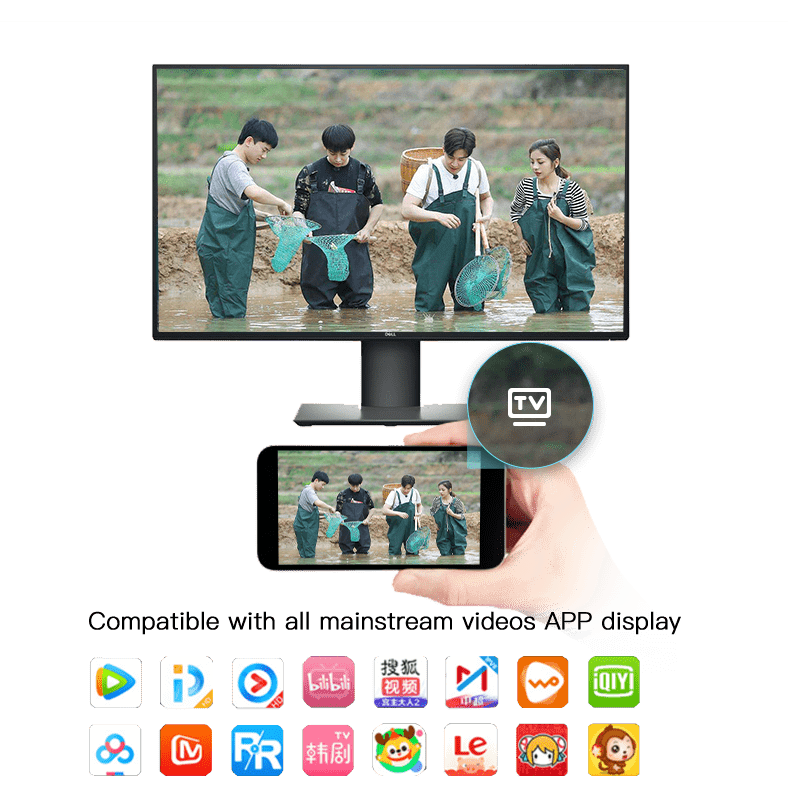DLNA screen mirroring- Introduction to the DLNA Screen Projection Protocol
The wireless screen casting function of DLNA is a wireless screen casting technology based on the DLNA protocol, which allows users to cast multimedia content from devices such as mobile phones, computers, tablets, etc. onto televisions or large screens through wireless connections, achieving the effect of watching on a large screen.
Introduction to the DLNA Protocol
The DLNA protocol is a file based protocol that supports the encapsulation and transmission of various types of multimedia content, including audio, video, images, and more. It can deliver multimedia content from devices to other devices such as TVs, speakers, etc. on the same WiFi network, achieving wireless connection and screen mirroring display.

Characteristics of wireless screen mirroring function for DLNA
- Cross platform compatibility: The DLNA wireless screen casting technology not only supports mobile devices such as Android and iOS, but also desktop devices such as Windows and Linux. Different devices can be connected and transmitted to each other.
- Wireless connection: Users do not need to use cables or docking stations, and can achieve wireless connection and screen mirroring between devices within the same WiFi network.
- Multi format support: The DLNA protocol supports multiple multimedia formats, including common audio, video, and image formats, allowing users to freely transfer and share multimedia content between different devices.
- Smoothness: Due to the efficient transmission mechanism adopted by the DLNA protocol, users can enjoy a smooth and stable viewing experience when watching screen cast content.
- Adaptive Resolution: The DLNA protocol can automatically adjust the screen projection resolution according to different devices and network environments, ensuring image clarity and smoothness.
How to implement the wireless screen mirroring function of DLNA?
- Confirm device support: To use the wireless screen mirroring function of DLNA, first confirm that the device supports the DLNA protocol. Generally speaking, modern smart TVs, speakers, and other devices are equipped with built-in support modules for the DLNA protocol. For devices such as mobile phones and computers, it is necessary to install corresponding DLNA protocol software or plugins to achieve wireless screen mirroring function.
- Connect to the same WiFi network: To use the wireless screen mirroring feature of DLNA, all devices need to be connected to the same WiFi network. Ensure that TV, audio, and other devices are connected to the home network or public WiFi hotspot.
Enable DLNA service: On devices such as televisions or speakers, turn on the corresponding DLNA service switch. Find the “Network Settings” or “Wireless Screen mirroring” option in the device menu and enable the DLNA feature. - Search for devices: Open the DLNA application or plugin on devices such as mobile phones or computers to search for available TV or audio devices. Generally speaking, the application will list the connectable devices on the same WiFi network.
- Select content transfer: Select the device you want to screen from the list of available devices found, and then choose the multimedia content you want to transfer, such as photos, videos, or music. The application will automatically transfer the content to the selected device and start playing on the large screen.
- Adjust display settings: After the transmission is completed, users can make some display settings adjustments as needed, such as adjusting resolution, audio output, etc. Some devices also support mirror display function, which means that the phone or computer screen is directly mirrored onto the TV or large screen.
Precautions
- When using the wireless screen mirroring function of DLNA, attention should be paid to protecting personal privacy and data security. Do not transmit sensitive or private information through DLNA.
- If there are issues such as lag or delay during transmission, you can try checking if the network connection is stable or restarting the device and router.
- Different devices and applications may support different versions and features of DLNA. When encountering problems, you can refer to the official documentation of the device or application for more assistance.
In short, the wireless screen mirroring function of DLNA is a very practical technology that allows users to conveniently project multimedia content from devices such as smartphones and computers onto televisions or large screens, enjoying a more comfortable and convenient audio-visual experience. Whether it’s watching movies, sharing photos, or conference presentations, the wireless screen mirroring feature of DLNA can bring users better audio-visual effects and interactive experiences.